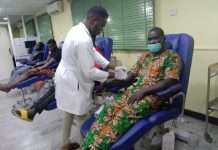“Bras don’t fit right, shirts don’t fit right, pictures where you have your back to the camera are to be deleted, burnt and never see the light of day. Your life revolves around what feels comfortable (slouching and uneven shoulders) and what will benefit you in the long run (good posture). . .Nobody wants to be the girl with a humpback.”
Those were the words of Chelsea Ellis, in an attempt to describe the ordeal of many a scoliosis patient. Yet, some persons experience even worse!
The International Scoliosis Awareness Day (ISAD) falls on the last Saturday of each June. This year’s celebration fell on 26 June. In commemoration of ISAD 2021, this article seeks to share basic information about scoliosis.
Scoliosis: The ordeal
What exactly is scoliosis? Scoliosis is a medical condition in which a person’s spine has a sideways curve. The curve is usually “S” or “C”, shaped instead of a straight “l”. In some, the degree of curve is stable, while in others, it increases over time. The larger the curve, the greater the risk of it worsening over time.
S-shaped curves, also called “double curves,” tend to get worse over time. C-shaped curves are less likely to worsen. Scoliosis can affect any part of the spine, but the most common regions are the chest area (thoracic scoliosis) and the lower section of the back (lumbar scoliosis).
Now, scoliosis not just about “a little curved spine” – it affects people in everything they do, 24 hours a day, seven days a week! It can prevent you from doing the most basic tasks, like putting socks on, washing your hair or simply trying to get comfortable. It can be quite painful. In severe cases, heart and lung problems may also occur. It can affect those with it in different ways, depending on the degree. It is said that no two people have identical scoliosis journeys.

What causes scoliosis?
It may be congenital scoliosis (caused by a bone abnormality present at birth), or neuromuscular scoliosis (as a result of abnormal muscles or nerves; for example, in people with spina bifida or cerebral palsy, or in those with various conditions that are accompanied by, or result in, paralysis).
It may also be degenerative scoliosis which may result from traumatic (from an injury or illness) bone collapse, previous major back surgery, or osteoporosis. Idiopathic scoliosis is the most common type of scoliosis and it has no specific identifiable cause. There is, however, strong evidence that idiopathic scoliosis is inherited.
Pointers to scoliosis
Uneven shoulders (hence, clothes do not hang properly), with a prominent shoulder blade; uneven waist, or leaning to one side all point to scoliosis. The head may also be slightly off the centre. In babies, it can be identified through a bulge on one side of the chest. The baby might consistently lie curved to one side
Diagnosis
The diagnosis of scoliosis and the determination of the type of scoliosis are made by a careful bone exam and an X-ray to evaluate the magnitude of the curve.
Gender: Females are at a higher risk of having scoliosis than males.
Age: Scoliosis signs and symptoms often start during a growth spurt that occurs just before puberty. Scoliosis could also occur in babies. In babies, a bulge is identified on one side of the chest. The baby might consistently lie curved to one side.
Genetics: People with scoliosis are more likely to have close relatives with the same condition than people without scoliosis.
Treatment
Casting: Casting, instead of bracing, is sometimes used for infantile scoliosis, to help the infant’s spine to go back to its normal position as it grows. This can be done with a cast made of plaster of Paris. The cast is attached to the outside of the patient’s body and will be worn at all times. Because the infant is growing rapidly, the cast is changed regularly.
Bracing: Bracing is the usual treatment choice for adolescents who have a spinal curve between 25 degrees to 40 degrees, particularly if their bones are still maturing and if they have at least two years of growth remaining. The purpose of bracing is to halt progression of the curve. It may provide a temporary correction but, usually, the curve will assume its original magnitude when bracing is eliminated. Braces are usually worn all the time, even at night. The more hours per day the patient wears the brace, the more effective it tends to be.
Surgery: Those who have curves beyond 40 degrees to 50 degrees are often considered for scoliosis surgery. The goal is to make sure the curve does not get worse, but surgery does not perfectly straighten the spine. Surgery (spinal fusion) is recommended in severe cases, where scoliosis can progress over time. In some cases, a back brace may be needed to support the spine.
Exercise: Exercise does have a role in the treatment of scoliosis, along with more conventional treatments like bracing. According to the Scoliosis Research Society, physical activity is generally beneficial to kids with scoliosis. So, unless you are in pain or your doctor gives you certain instructions, you should continue to participate in the activities and sports you love, even if you wear a brace. In fact, it is good for your back.
Hormonal imbalance and scoliosis
European research is connecting scoliosis to low levels of certain hormones and the brain not responding to these hormones. These hormones include leptin, melatonin, calmodulin, serotonin and growth hormones.
For example, many scoliosis patients are deficient in serotonin. Serotonin-controlled nerve pathways are responsible for satiety, happiness and dynamic postural control. Serotonin is also converted into melatonin; and melatonin deficiency is tied to scoliosis.
One can take over-the-counter amino acids that the body converts into serotonin, correcting both hormone imbalances. Fixing these imbalances helps one experience greater, longer-lasting success with muscle memory retraining.
Is scoliosis in Nigeria?
Yes, many Nigerians are affected by scoliosis – babies, adolescents and adults alike. Scoliosis does not exist in the Americas alone. It’s no respecter of persons.
Living beyond the curve
For as many who have scoliosis, know that scoliosis does not define you. In fact, you can defy the seeming limitations of scoliosis, despite your condition. How do you do this?
Do not feel any less beautiful, smart or capable, than you really are! The shape of your hips or shoulders is not your true definition. The length of your legs does not even give the slightest hint of your innermost strength, power and capabilities!
Truth be told, emotional and psychological stress are inevitable. Yet, do not allow yourself to be depressed, or your self-esteem to be crushed.
Find a support group. Start with your friends and explain to them how your scoliosis diagnosis affects your life. Once you have their support, try to find a support system of other scoliosis patients who can share their experiences with you and give you advice.
You can also participate in online forums to learn everything, from fashion and accessorising with a brace to reading personal stories from scoliosis patients.
You can still live a full life, despite scoliosis! Don’t you dare allow scoliosis have the last laugh! When you see your scoliosis, see your beauty!
By Taiwo Olawehinmi













